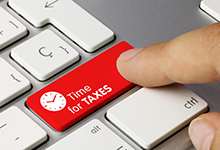Global Corporate Tax Changes: Advice Is More Crucial Than Ever

“Over the next few years, we are also implementing a global minimum corporate tax to limit the negative effects of tax competition.” (Enoch Godongwana, Minister of Finance, Budget 2024)
There have been significant shifts in the corporate income tax landscape in South Africa and globally. Recent trends noted by the OECD and The Tax Foundation include:
- Statutory corporate income tax rate changes in 13 countries in 2023
- A reversal of a two-decade downward trend in corporate tax rates
- An increase in the average global CIT rate from 20% to over 21% in the last year.
Corporate tax rates have declined from the highs of an average 40% in 1980 and 28% in the early 2000s to around 21%. South Africa has also reduced its CIT rate over the years, from 30% in 2000 to 27% in 2022 – but it is still substantially above the international average.
A new global tax treaty
Dubbed “an historic step towards changing the financial landscape”, 110 UN Member States, including South Africa, recently voted in favour of the terms of reference for a new global tax treaty. The UN says that all 193 UN Member States could vote on a finalised UN global tax treaty as early as 2027.
In the meantime, more than 140 countries have already agreed to this global minimum tax, and some have already implemented this tax reform, including South Africa. Finance Minister Enoch Godongwana announced in his 2024 Budget Speech that South Africa will be implementing the global minimum tax with effect from years of assessment commencing on or after 1 January 2024.
Why a minimum global tax?
Multinational companies use tax planning strategies, like moving profits to low-tax jurisdictions, to minimise their tax liabilities. A global minimum tax aims to ensure that these multinationals pay their fair share of taxes, regardless of where they operate.
This limits the race to the bottom of effective corporate tax rates for large multinationals, with countries competing to attract income by offering low tax rates and tax incentives.
On a social responsibility level, it goes without saying that companies should contribute fairly to the financial stability of the countries they operate in.
Who is affected?
A global minimum tax will ensure that any multinational enterprise group with annual revenue exceeding €750 million (+-R15 billion) will be subject to an effective tax rate of at least 15%, regardless of where its headquarters, operations, sales or profits are located.
Implementation in South Africa
Government plans to introduce two measures to effect this change for qualifying multinationals:
- The income inclusion rule applies to multinational entities headquartered in South Africa and requires a tax top-up if the effective rate in the jurisdictions the multinational entity operates in is lower than 15%. This tax is payable to SARS as opposed to the relevant jurisdiction.
- The domestic minimum top-up tax applies in situations where the multinational entity’s effective tax rate in respect of its South African profits is lower than 15%. In such circumstances, the South African constituent entities of the multinational entity are jointly and severally liable for the top-up tax.
What is the expected impact?
A global minimum tax will ensure that multinational corporations contribute their fair share of taxes in jurisdictions where they operate, curbing tax avoidance and safeguarding countries’ tax bases. It’s expected to generate significant additional tax revenues for many countries, especially those in the Global South.
In South Africa, National Treasury predicts that implementing the global minimum tax will bolster our corporate income tax base by approximately R8 billion in 2026/2027.
Whether a global minimum corporate tax can deter corporate tax avoidance and evasion remains to be seen. Concerns have also been raised about the impact on companies’ competitiveness, likely increased compliance costs, and possible double taxation.
Will it affect SMEs?
In the long run, the changes should benefit smaller local companies. With a broadened tax base, there may be opportunities in South Africa to lower the personal income tax burden on individuals, or to consider more globally competitive corporate tax rates than the current 27%, which is well above the international average.
The change may also create a more certain and predictable global tax environment, which is conducive to long-term planning and investment decisions.
What needs to be done?
Qualifying multinationals should assess their effective tax rates for the income inclusion rule and domestic minimum top‐up tax from 1 January 2024. Their local and global tax planning, and financial structuring, may need to be reviewed and updated.
While this probably doesn’t apply to your business (yet), companies of all sizes should note the significant shifts in international and local tax policy. This makes our up-to-date, expert tax assistance a must-have for every company navigating the changing tax landscape.
6 Ways to Make the Most of Your Employees’ Performance Reviews

“Always treat your employees exactly as you want them to treat your best customers.” (Stephen R. Covey, author of ‘7 Habits of Highly Effective People’)
Good business leaders recognise that regular employee performance reviews play a vital role in improving transparency, identifying talent, and enhancing performance – yet often this process is handled in a casual fashion or even not implemented at all. In fact, a recent study revealed that only 13% of employees and managers, and only 6% of CEOs, think their organisation’s performance appraisal system is useful. Even worse, 88% of respondents said their current performance review negatively impacted their opinion of the HR department.
Here are six tips for turning those opinions around and getting maximum value from your performance reviews.
Tip 1: Really listen
During a review it’s vital that the employee feels truly understood. Data shows that leaders who come to reviews with preconceived notions and a list of complaints are more likely to have unhappy teams. A massive 85% of employees would consider quitting if they thought their review to be unfair – and there is no surer way of making someone feel unfairly treated than to brush off their side of the story and make them feel unheard.
Companies should therefore focus on getting their leaders to:
- actively listen to employees during reviews
- avoid making assumptions
- ignore distractions such as phone calls
- pay attention to verbal and nonverbal cues.
Tip 2: Be transparent
Because performance reviews are often linked to raises and other benefits, it’s extremely important that the employee understands exactly why certain decisions were made. Giving clear, fair, specific and actionable feedback allows the employee to see how they can get a better raise next year and what they need to do to gain a promotion. Vague or unclear feedback only leads to distrust of the system – and of the company’s HR and leadership.
Tip 3: Keep looking forward
While the very name “performance review” suggests a look back over the course of the past year, it’s also the ideal time to project forward into the future. By using the review to set new goals and speak about career progression, your leaders will be able to motivate employees to do well. Knowing that you’re being considered for promotions or that there are rewards at the end of the tunnel is motivational. Little wonder, then, that forward-looking performance reviews have been shown to improve employee productivity by 13%.
Tip 4: Your employee’s opinion matters
A decent performance review is a conversation between employer and employee. It is a chance to listen as well as to speak, and this dynamic should be carried through to the very design of the review. Speak with both managers and employees about the reviews. Ask them what works and what doesn’t and encourage them to suggest things that would make the process more useful. Then actually adjust the review to accommodate these requests where possible. Employees who feel they have power and buy-in over the review process are far less likely to feel hard done by.
Tip 5: Little and often
According to many business experts, traditional annual business reviews are inadequate. Doing them once a year leaves you with too much ground to cover and places undue stress on the employee – who is then less likely to function optimally during the review. In fact, a recent study suggested the pressure can be so bad that 34% of millennials admitted to crying during their performance review.
By having more frequent and casual performance chats, and addressing any issues when they arise, companies can reduce stress and get better results. According to a report by ClearCompany, employees at companies that use continuous feedback systems are 65% more motivated and 66% more productive.
Tip 6: Be prepared
At the end of the day, an employee performance review is about reward and improvement. Before going into a review, it’s important to know exactly what rewards you’re able to offer, and how these can be implemented.
Work with your team to create a system that is not only motivational, but effective.
Your Tax Deadlines for October 2024

- 07 October – Monthly PAYE submissions and payments
- 21 October – End of filing season for individual taxpayers (non-provisional)
- 25 October – Value Added Tax (VAT) manual submissions and payments
- 30 October – Excise duty payments
- 31 October – VAT electronic submissions and payments, Corporate Income Tax Provisional Tax payments where applicable, and Personal Income Tax Top-up Provisional Tax payments.
